TotalEnergies set for real transformation
In May 2020 Total announced its ambition to achieve carbon neutrality by 2050, in line with the society – what is TotalEnergies’ net zero ambition? How will this be achieved?
Firstly, we should remember where this ambition came from. The Paris Agreement set clear objectives for greenhouse gas emissions, which aim to keep the rise in the planet’s average temperature well below 2°C. This agreement calls for a carbon-neutral society by the second half of the century, but in 2019 scientists told us that our target should be a maximum temperature increase of 1.5°C, and that meant carbon neutrality by 2050. To achieve this objective, each country must evolve its energy mix with the double challenge of supplying more energy for everyone, while reducing CO2 emissions. Society as a whole must contribute; businesses, as well as governments and consumers. This is why TotalEnergies is doing its part. We have announced our ambition to achieve carbon neutrality in 2050 or earlier, together with society for our global business across our production and energy products used by our customers.
There are three parts to this ambition. The first is for us to achieve carbon neutrality for our own production facilities (Scopes 1 and 2). We have control over these emissions and are therefore responsible for them. The second is to achieve carbon neutrality for our indirect global emissions, we must work with our customers to help them achieve their own carbon neutrality, by helping them to reduce their direct emissions, which correspond in fact to indirect emissions (Scope 3). Although we do not have control over these indirect emissions, we can influence them. It is the demand for energy that drives supply, rather than the reverse: TotalEnergies does not manufacture airplanes or cars and cannot dictate whether a vehicle or aircraft will use gasoline, electricity or hydrogen. But TotalEnergies can provide these customers with lower-carbon energy products at an affordable price, and thereby help them to control their emissions.
We will work towards carbon neutrality with our customers, naturally, but also with governments and communities in countries where we operate, because it will be vital for governments to implement policies that encourage carbon neutrality. Europe is a pioneer in this regard with the "Green Deal", and in view of the European share of our sales (around 60 percent), TotalEnergies has decided to specifically commit to achieving net zero emissions in Europe for Scopes 1, 2 and 3 in 2050 or earlier. This is the third part of our ambition.
In September 2020 you announced a ten-year strategy to transform into a broad-energy company - What is this strategy going forward, how will this be achieved and what have you done so far?
The global energy mix must evolve to meet the objectives of the Paris Agreement, but an energy system cannot be changed overnight. It will take thirty to fifty years, but a start must be made now. TotalEnergies is at the nexus of the climate issue and has set itself the target of being carbon neutral.
In September 2020 we reflected this ambition in a ten-year strategy to turn the company into a broad energy company. This transformation is based on the development of two cornerstones: essentially renewable electricity and gas. It also entails a halt to growth in oil production and a decrease in sales of petroleum products.
In 2015, oil products accounted for 66 percent of our sales, gas 33 percent and electricity less than 1 percent. Four years later, our mix has already changed substantially, since in 2020 oil products accounted for 55 percent of our sales, natural gas 40 percent and electricity 5 percent. In 2030, renewable electricity will represent 15 percent of sales, biomass & hydrogen 5 percent, gas 50 percent, and oil only 30 percent.
You will of course continue to be in the oil business but how will your priorities change?
Electricity, not oil, will be the growth market. So we see the role of oil differently. It is a mature business which generates cash flow and finances the investments associated with our transformation, such as those in electricity and renewables.
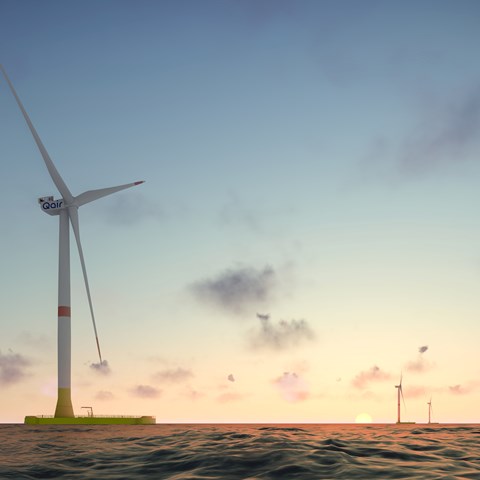
Future offshore wind farm EOLMED in France
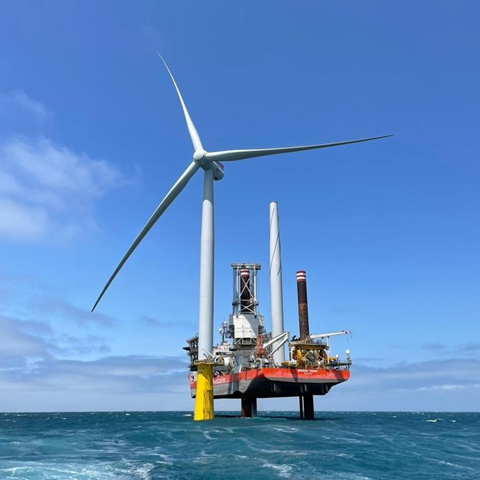
An offshore wind project under construction in Taiwan
However, in a world below 2°C, we will still be producing oil for around 30-40 million barrels a day in 2040-2050, according to various scenarios, compared to 100 million before the pandemic. The world will still need oil. Although, I strongly believe that in the end a lot of it will be left underground. The Stone Age didn’t end because they ran out of stones. We will move on from oil, leaving oil buried in the planet. In our models, we expect that demand for oil will plateau towards 2030, then drop, notably because Europe and China will have switched to electric vehicles.
This is why TotalEnergies is focusing on oil that is inexpensive to produce, and will not develop, for example, new oil sands projects in Canada. The company is therefore withdrawing from the more costly part of the oil market. For us, this means that our exploration must focus on finding oil that will be low-cost to develop and produce.
What was the motivation behind the name change?
Total stands for oil – we are still labelled as an oil company, even though gas accounts for about half of TotalEnergies’ portfolio, and we want to make electricity an integral part of our portfolio by 2030. So it’s a real transformation.

New TotalEnergies logo
This is why we recommended to our shareholders in May that the company’s name be changed to “TotalEnergies”. The aim of this name change is to reflect TotalEnergies’ strategy for becoming a broad energy company in its identity. You have Total, all energies, and all the energies of our teams at our customers’ service. With “Energies” in the plural, we have found a name that says exactly what we want to do, i.e. offer, produce and distribute all types of energy. It truly embodies the dynamic that we have resolutely embraced. In fact, with this new name we are truly moving closer to creating a new Total.
What are the main challenges the energy industry faces in terms of a clean energy transition?
The planet is faced with two great challenges: that of a growing population aspiring to higher living standards with the emergence of numerous middle classes, and that of sustainable development with climate change, as well as biodiversity.
In this context, today the energy sector is confronted with two main challenges. We must be capable of producing more affordable energies, to allow the whole planet to reach a better standard of living and lift certain developing countries out of poverty. But at the same time, we must reduce our emissions to almost zero, and achieve carbon neutrality by 2050.
The great challenge will; therefore, be to supply energy that is both clean and low-cost to emerging countries. That is where it will all play out! We won’t achieve the 2°C target set by the Paris Agreement if India or China continue to use and build coal-fired power plants to produce their electricity. And they use coal because it is the cheapest energy.
To bring about this global energy transition, there are new technologies and new markets to be developed. But companies will not accomplish this alone. We need governments and public authorities to help finance projects and develop technologies that would not be cost-effective without their help to start with, such as hydrogen, carbon capture and storage (CCS) or roll-out of very high-power electric charging stations.
How are you building up TotalEnergies’ renewable business and how can the company become a world leader in this sector?
TotalEnergies aims to be among the world's top five renewable energy producers by 2030. Over the last five years we have taken all the steps to succeed in this. 2020 marked a true milestone in our strategy, and we set our ambition at 100 GW in 2030. For a company like TotalEnergies, generating 15 percent electricity in your portfolio represents more than US $60 billion in projects to be financed over ten years.
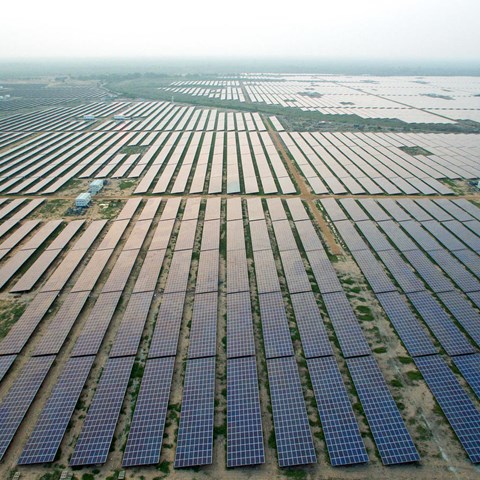
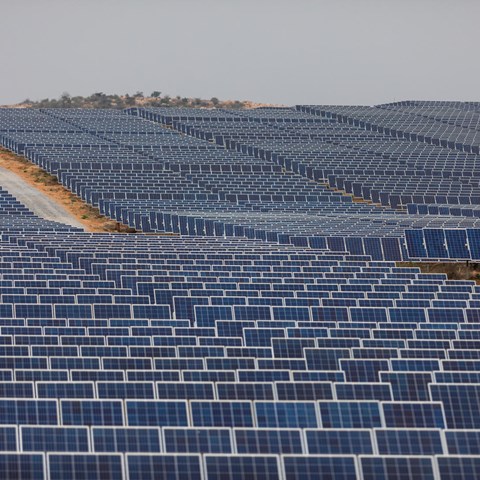
Solar plants in India
We are rapidly developing our portfolio of renewables. At the end of 2021, we achieved a gross renewable power production capacity of more than 10 GW. And we keep going thanks to the acquisition in early 2021 of 20 percent of Adani Green Energy, the world’s foremost solar developer, and of project portfolios in the United States. TotalEnergies will continue to expand this business by around 6 GW per year to reach 35 GW of gross production capacity from renewable sources by 2025. By the way, we have already locked this 35 GW portfolio. It is either under construction or already under development.
TotalEnergies accelerates the growth of its investments in renewables & electricity, bringing them to US $3 billion per year, or nearly 25 percent of its investments over the period 2021-2025. And all our investments achieve at least 10 percent return on capital. To be a lasting force in renewables, you must be profitable. We are working to reduce costs by developing our projects on a large scale, and we prefer to acquire pipelines of projects to be developed while taking the risk of their construction.
I am confident that TotalEnergies has the strengths to achieve this. TotalEnergies is a global company, renewable energies are everywhere and everyone wants to develop them. So TotalEnergies has a significant competitive advantage thanks to its size and global presence.
How important a role will natural gas play in the energy transition?
Gas is a key energy for the energy transition. It is important to realise that gas and renewables are complementary. Gas provides the answer to seasonal energy demand and the intermittent nature of renewable energies. Customers want reliable energy that is always available and storing electricity is not easy and is expensive. So yes, gas is a fossil fuel, but a gas-fired power plant generates only half as much CO2 as a coal-fired one and does not raise the problem of air quality in cities. I am; therefore, convinced that without gas we cannot achieve energy transition- in emerging countries.
For this is the overriding question in climate change: how can we convince powers like India and China to move away from coal, which is cheaper and still represents 27 percent of global energy, and 58 percent of China’s energy? It is a true challenge to convince them to get to grips with climate change, and to do it we must provide them with low-cost energy that will allow them to continue developing their economies: the answer is gas! Without them, the energy transition cannot be successful…because that is where everything is playing out!
According to the International Energy Agency’s Sustainable Development Scenario, natural gas consumption will soar between now and 2040, when it is expected to represent one-quarter of global energy demand, and we will be there to meet that demand. Gas is; therefore, an energy source that we must focus on, while working towards decarbonising it with biomethane and clean hydrogen- which are areas that TotalEnergies invests in. And also controlling the methane emissions connected to its production cycle.
What renewable energy sectors will you be investing in the most?
We are focusing our renewables investments on solar photovoltaics and onshore and offshore wind. But not only that. The energy transition offers abundant opportunities for growth: electric charging points, batteries, energy storage, biofuels, biogas, hydrogen… there is a whole range of them! That is the new TotalEnergies with a "S".
How important will hydrogen or biogas become in helping to advance energy transition?
It’s not a very big market, yet. Hydrogen is three times as expensive as natural gas. But renewable gases–hydrogen and biogas–partner well with natural gas. The question is how to get the hydrogen economy to take off. That is where the role of government will be decisive. TotalEnergies’ job will then be to produce decarbonised hydrogen in huge quantities. We have the technology to produce blue hydrogen based on gas with CO2 capture. And green hydrogen, produced by electrolysis, is an obvious choice for complementing our investments in renewable farms.
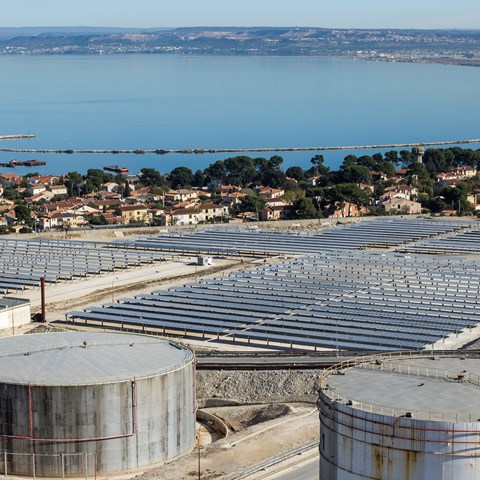
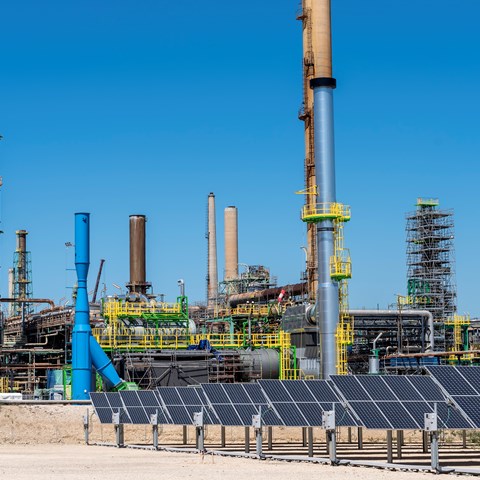
Photos of the biorefinery of La Mède in the South of France, a site which includes, among other things, a biorefinery to produce for example biofuels, and a solar farm
To move the energy transition forward, I would support regulations requiring gas distributors to include 10 percent of renewable gas in their networks, just as we did with biofuels. That is how you create a market! TotalEnergies’ job is the widescale production and distribution of energy, like LNG today. So if in Europe, trucks start switching to hydrogen from 2030, TotalEnergies will have to be able to supply hydrogen to truckers, just as today it supplies other energies.
In biogas, we have just acquired Fonroche Biogaz, the largest French methanation company. We are also interested in biogas for the development of renewable gas mobility, especially in Europe and the United States. TotalEnergies will scale up biogas, targeting 2 TWh/y production by 2025.
What role will electric cars play in the future and how is TotalEnergies working in this mobility space?
Clearly, modes of mobility are changing. Governments are moving towards transport decarbonisation, and that trend is going to accelerate fast. By 2025, 5 percent of European vehicles will be electric, 20 percent by 2030, and 95 percent in 2050.
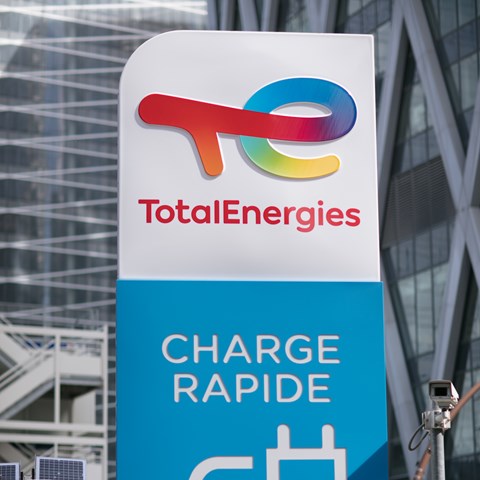
An electric charging point in town
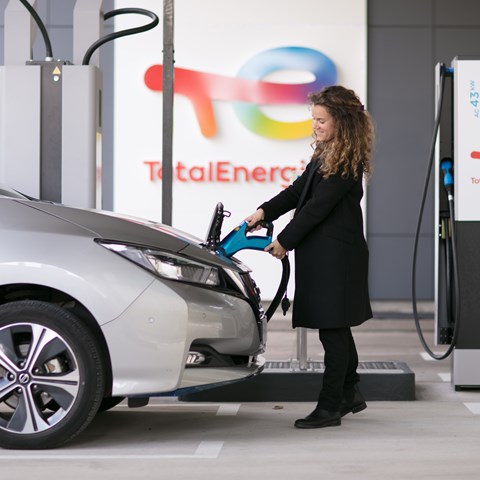
Woman charging her car at electric charging points
Our aim is to be recognised in the field of electric mobility as we are today in fuel distribution. We want to operate 150,000 charging points in Europe by 2025, including at least 300 service stations equipped with high-powered charging points in our network. TotalEnergies pursues its development in electric mobility in major cities throughout the world, with a large portfolio of EV charge points currently in operation or in the process of being installed in Amsterdam and its region (22,000), Antwerp (3,000), Paris (2,300), London (1,700), but also in Singapore (1,500) and Wuhan and its province Hubei (11,000).
We are also developing a European battery production activity through our partnership with Stellantis and Mercedes-Benz that we have welcomed as a new partner of Automotive Cells Company (ACC). Following this entry, the partners have committed to increase ACC’s industrial capacity from 48 GWh to at least 120 GWh by 2030.
Still about mobility, TotalEnergies is also developing other solutions for reducing transport related CO2 emissions, alongside electricity. They include sustainable aviation fuel based on renewable biodiesel in aviation, as well as Bio-LNG in shipping, biogas and hydrogen for trucks, etc.
What role will technology play in advancing TotalEnergies' new energy strategy?
I can think of four main technologies that we are developing and that are essential in helping us reach our net zero objective.
First, floating wind power. TotalEnergies is involved in pioneering projects in France, South Korea and the United Kingdom. This technology does not have the locational constraint of fixed offshore wind, and that allows it to generate more power by harnessing the stronger winds further offshore. This is a very promising segment and we have the assets to meet the technological challenge because of our skills in offshore operations and our excellent understanding of the management of major offshore projects. That could give us a head start on what is set to become a significant new technology.
Then there is carbon capture and storage. All scenarios agree that the global energy mix will still contain hydrocarbons in 2050. So if we want to get to net zero emissions, we need negative emissions. CCS is one way of doing that, and we are working on it in the Northern Lights project in Norway. TotalEnergies’ priority is to capture the CO2 from its sites. In order, to turn that into a profitable business, we need critical mass and carbon pricing. This technology could halve our carbon emissions.
Lastly, to offset the intermittence of renewables, we need to be able to store energy. There are two main technologies. One is hydrogen, but the problem there is that electrolyzing water is very expensive. The other is battery storage systems. Again, this technology is just emerging. But developments are coming fast, and I really believe that one day, we will have high-performance, large-scale storage solutions.
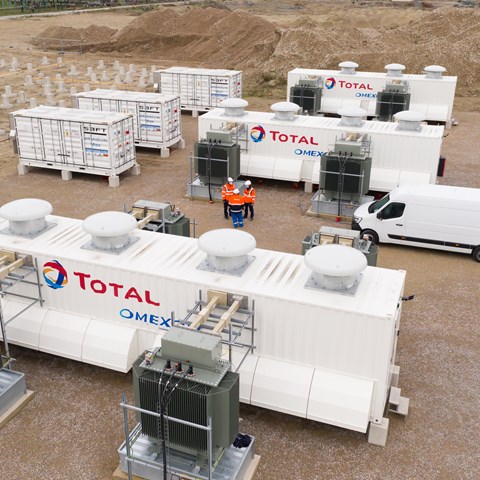
Images of renewable energy storage batteries at sites in Dunkerque, France
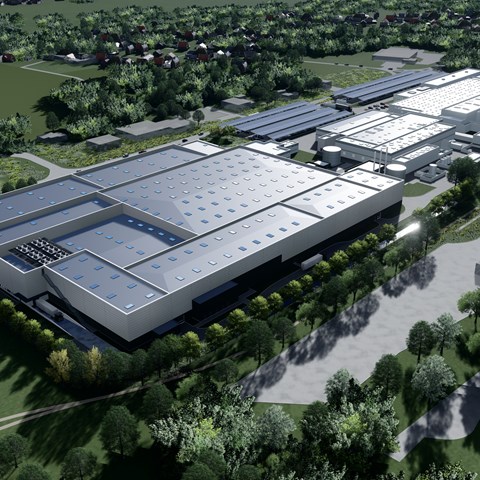
An image of a future pilot battery manufacturing plant for the automotive industry by ACC, the joint venture of TotalEnergies and Stellantis.
At dmg events we are launching our new energy platform, Energy Connects. How important do you think it is for energy news platforms to cover the whole energy spectrum now?
Total became TotalEnergies, and Pipeline Magazine is becoming Energy Connects: the world is changing, businesses are changing, and the media is changing. And their names change too. That’ is the direction of history. Congratulations on your new name, it shows that you have grasped the energy challenges of our century!
Society’s expectations in terms of the environment are changing rapidly, and our role as a broad energy company is not to fall behind those expectations, and to offer solutions that respond to them. The Oil & Gas industry is changing completely. Companies in this sector are adopting different strategies to meet society’s expectations.

Patrick Pouyanné, CEO of TotalEnergies
It is important to demystify the public debate around energy. It is not about business on one side, thinking only about profit, even at the cost of destroying the planet, and NGOs on the other, single-handedly leading the fight against climate change. Business and industry are tackling these issues head-on, because they understand that it is their future that is at stake, but also and above all because they have a decisive role to play in the challenges we have talked about. TotalEnergies’ ambition is to be a major player in the energy transition.
If a publication like Energy Connects shows the situation as it really is, with objective reporting on the progress being made, and the work still left to do, then I am delighted!
KEEPING THE ENERGY INDUSTRY CONNECTED
Subscribe to our newsletter and get the best of Energy Connects directly to your inbox each week.
By subscribing, you agree to the processing of your personal data by dmg events as described in the Privacy Policy.
















